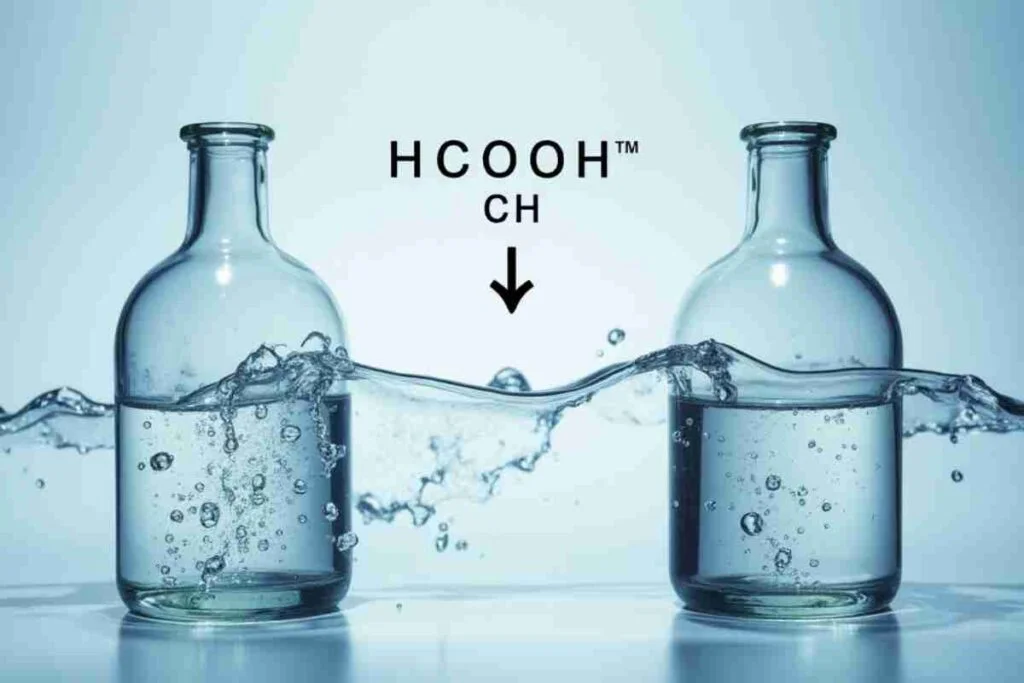
HCOOCH CH2 H2O Explained – Formula, Stability & Role in Reactions
In the vast landscape of organic chemistry, certain molecular structures play pivotal roles in industrial processes, biochemical reactions, and synthetic pathways. One such compound is HCOOCH CH2 H2O, a chemical entity with distinct properties and applications. Whether you’re a chemistry student, researcher, or industry professional, understanding this molecule’s behavior, stability, and reactivity is crucial.
This comprehensive guide will delve into the structure, properties, stability factors, and chemical reactions of HCOOCH CH2 H2Oe, providing valuable insights for academic and industrial applications. By the end, you’ll have a clear grasp of why this compound matters in both theoretical and practical chemistry.
What Is HCOOCH CH2 H2O?
HCOOCH2H2O is an organic molecular structure that combines a formate group (HCOO), a methylene bridge (CH2), and a water molecule (H2O). While not a standard IUPAC-named compound, this arrangement appears in various chemical intermediates, reaction mechanisms, and biochemical processes.
Key Characteristics:
- Functional Groups: Contains ester-like (HCOO) and alcohol-like (H2O) components.
- Reactivity: Participates in hydrolysis, esterification, and dehydration reactions.
- Occurrence: Found in certain organic synthesis pathways and catalytic processes.
Understanding its molecular behavior helps chemists optimize reactions in pharmaceuticals, polymers, and agrochemical production.
Molecular Structure & Formula Breakdown
The formula HCOOCH CH2 H2Oe can be dissected into three main components:
- HCOO– (Formate Group)
- A carboxylate derivative, often involved in esterification.
- Acts as a nucleophile or leaving group in reactions.
- –CH2– (Methylene Bridge)
- A simple hydrocarbon linker that adds flexibility to the molecule.
- Common in polymer chains and organic synthesis.
- H2O (Water Molecule)
- Can be part of a hydration complex or act as a solvent in reactions.
- Influences hydrogen bonding and stability.
Hypothetical Structure Visualization:
While not a standalone stable compound, HCOOCH CH2 H2O may exist transiently in:
- Reaction intermediates (e.g., ester hydrolysis).
- Enzyme-catalyzed processes (biochemical pathways).
- Industrial chemical synthesis (e.g., formaldehyde derivatives).
Chemical Stability of HCOOCH CH2 H2Oe
Stability depends on:
1. Environmental Conditions
- pH Sensitivity: Decomposes under strong acids/bases via hydrolysis.
- Temperature: High heat may break the HCOO–CH2 bond, releasing formic acid and methanol.
2. Solvent Effects
- Polar solvents (water, ethanol): Stabilize via hydrogen bonding.
- Non-polar solvents (hexane): May cause aggregation or precipitation.
3. Role in Equilibrium Reactions
- Often appears as a short-lived intermediate in:
- Esterification: HCOOCH3 + H2O ↔ HCOOH + CH3OH
- Hydrolysis: Breaking down esters into acids and alcohols.
Key Reactions Involving HCOOCH CH2 H2O
1. Hydrolysis Reaction
- Process: HCOOCH CH2 H2O + H2O → HCOOH (formic acid) + CH3OH (methanol).
- Catalysts: Acids/enzymes (e.g., lipases) accelerate this reaction.
2. Dehydration Synthesis
- Reverse of hydrolysis: HCOOH + CH3OH → HCOOCH3 (methyl formate) + H2O.
- Industrial Use: Producing esters for fragrances and solvents.
3. Oxidation/Reduction
- Oxidation: Can yield CO2 and H2O under strong oxidizers.
- Reduction: May form methanol or formaldehyde derivatives.
Practical Applications of HCOOCH CH2 H2O
1. Pharmaceutical Industry
- Intermediate in drug synthesis (e.g., prodrug activation).
- Used in controlled-release formulations.
2. Polymer Chemistry
- Methylene bridges (CH2) are key in resin and plastic production.
3. Agrochemicals
- Degradation product of pesticide esters.
4. Biochemistry
- Found in metabolic pathways involving formate and methanol.
Comparison With Similar Compounds
CompoundStructureReactivityStability
HCOOCH3 (Methyl formate) HCOO–CH3 High Stable
HCOOCH CH2 H2O HCOO–CH2–H2O Moderate Transient
CH3OH (Methanol) CH3–OH Low Very stable
Key Takeaway: HCOOCH CH2 H2O is less stable than its ester counterparts but crucial in dynamic reactions.
Safety & Handling Considerations
- Lab Protocols: Use gloves/goggles; avoid inhalation.
- Storage: Keep in cool, dry conditions to prevent decomposition.
- Disposal: Follow EPA guidelines for organic waste.
FAQs
1. What is HCOOCH CH2 H2Oe used for?
Primarily a reaction intermediate in ester hydrolysis and industrial synthesis.
2. Is HCOOCH CH2 H2O naturally occurring?
Rarely, mostly observed in lab reactions or metabolic processes.
3. How does HCOOCH CH2 H2O decompose?
Via hydrolysis into formic acid and methanol under aqueous conditions.
4. Can HCOOCH CH2 H2Oe form polymers?
Indirectly, as its CH2 group contributes to polymer chains.
5. Why is HCOOCH CH2 H2O unstable?
Due to the labile HCOO–CH2 bond and water interaction.
Conclusion
Though not a standalone compound, HCOOCH CH2 H2Oe is vital in:
Understanding reaction mechanisms (hydrolysis/esterification).
Designing industrial chemical processes.
Biochemical research (enzyme catalysis).
For chemists, mastering its behavior unlocks efficiencies in drug development, material science, and green chemistry.




